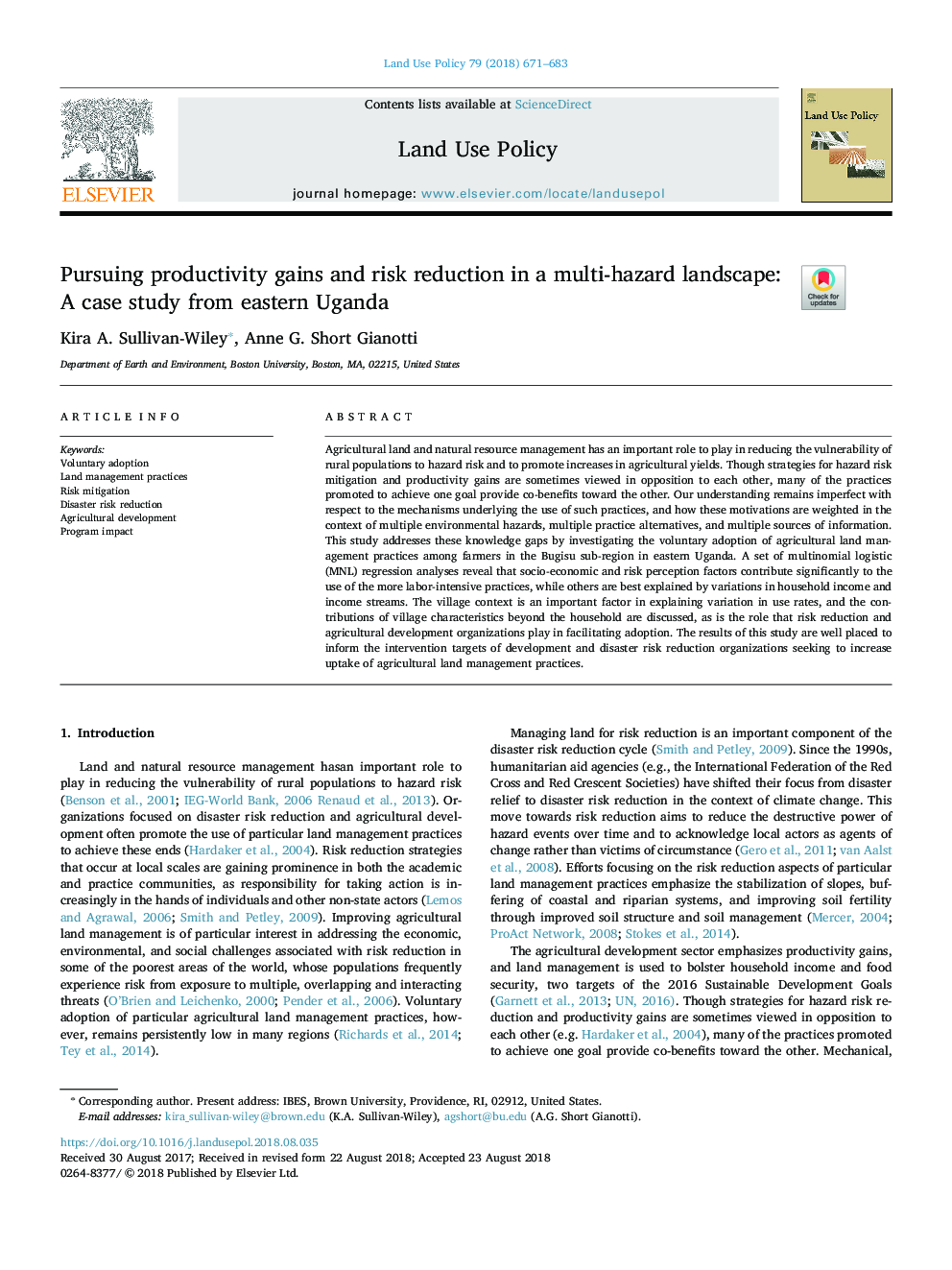| Article ID | Journal | Published Year | Pages | File Type |
|---|---|---|---|---|
| 11000104 | Land Use Policy | 2018 | 13 Pages |
Abstract
Agricultural land and natural resource management has an important role to play in reducing the vulnerability of rural populations to hazard risk and to promote increases in agricultural yields. Though strategies for hazard risk mitigation and productivity gains are sometimes viewed in opposition to each other, many of the practices promoted to achieve one goal provide co-benefits toward the other. Our understanding remains imperfect with respect to the mechanisms underlying the use of such practices, and how these motivations are weighted in the context of multiple environmental hazards, multiple practice alternatives, and multiple sources of information. This study addresses these knowledge gaps by investigating the voluntary adoption of agricultural land management practices among farmers in the Bugisu sub-region in eastern Uganda. A set of multinomial logistic (MNL) regression analyses reveal that socio-economic and risk perception factors contribute significantly to the use of the more labor-intensive practices, while others are best explained by variations in household income and income streams. The village context is an important factor in explaining variation in use rates, and the contributions of village characteristics beyond the household are discussed, as is the role that risk reduction and agricultural development organizations play in facilitating adoption. The results of this study are well placed to inform the intervention targets of development and disaster risk reduction organizations seeking to increase uptake of agricultural land management practices.
Keywords
Related Topics
Life Sciences
Agricultural and Biological Sciences
Forestry
Authors
Kira A. Sullivan-Wiley, Anne G. Short Gianotti,
